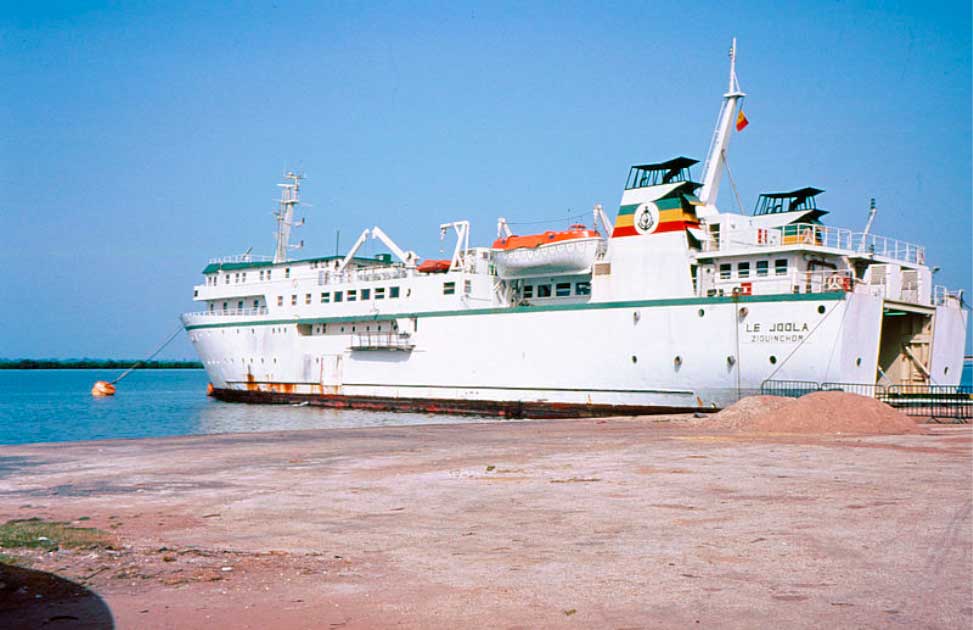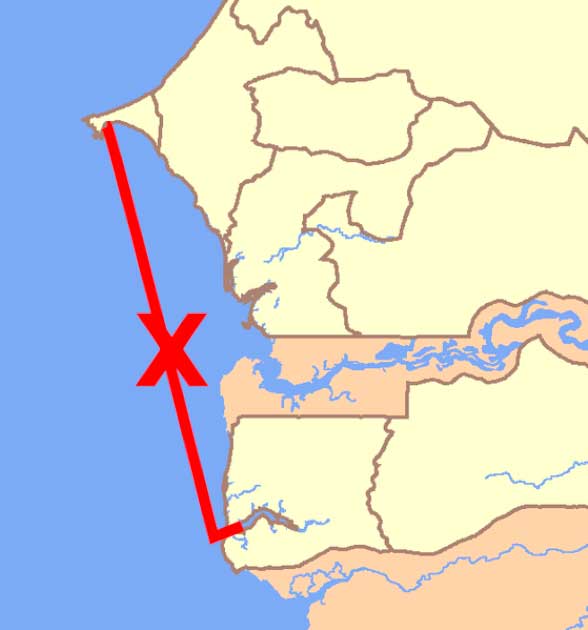Around 111 years ago, the infamous Titanic set sail from Southampton towards New York City. It was the ship’s maiden voyage and was supposed to be unsinkable. A degree of hubris combined with very large iceberg to prove that this was not the case and only two and a half hours after striking it, the ship sank killing around 1,500 people.
Only around 700 people survived thanks to the quick distress message that it sent out upon its collision with the ice. The ship stayed upright throughout the time it spent sinking which allowed many people to board the few lifeboats that were available.
It is due to this incident that many international regulations have been adopted to improve the safety of maritime travel and trade. However, these did little to stop the Le Joola Disaster.
A Terrible Loss of Life
Senegal is a West African nation that encompasses a large part of the western coast of Africa. It is separated by the nation of The Gambia in its middle creating almost a backward “C” on the map. Its capital, Dakar, is the site of the University and has, as usual, many of the economic and business opportunities of the country.
Dakar is situated in the north part of the country. In order to travel from the south of the country to the capital, the easiest way to go is to use the ferry, the Le Joola. This ship had been in use since 1990 and was around 80 meters (262 feet) long.

Built-in Germany, the Le Joola was constructed according to the correct safety and classification laws. The ferry was sailed usually no more than twice a week and took around 18 hours to reach the capital from its port of Ziguinchor. Operated by the Navy, the Le Joola would make an island break along the way.
Approximately 21 years ago, just off the coast of The Gambia, the Senegalese ferry named the Le Joola sank with over 1,800 people losing their lives. Tragically, only 64 people were able to survive.
Unlike the Titanic, this ship sank very quickly. The deck of the ship was underwater within five minutes. Though the underside of the ship could be seen for several days from the surface. There was no radio distress signal, no one managed to get aboard a lifeboat and the ferry was only 17 miles (27 km) from shore.
It was surrounded by fishing boats. Rescue would not come through for many, many hours. Hundreds of people found themselves trapped in air pockets within the ship. A few people managed to swim around the ship and climb aboard the upturned ship; those are the few that would survive. Screams could be heard for several days.
What Happened?
At the end of September 2002, the Le Joola was operating as normal. It was loading its cargo at the port of Ziguinchor and was boarded by around 500 students from the local area, excited to begin university in Dakar.
There were also local people mixed with tourists of the area making their way to the capital for various reasons. As well as these passengers, the cargo included some vehicles and regular cargo along with some fuel and water ballast.
It had been noticed even before the Le Joola set sail that it was listing to the side at an angle of around 10 degrees. It was thought at the time to be nothing to be worried about. Within a few hours, the ferry had made the first portion of its trip and made it to Carabane, where more people boarded. At around 6 pm the boat set sail again with around 2,000 passengers.
As the ferry made its way to Dakar, many passengers heard thunderclaps and noticed storm clouds coming over the horizon. This was not unusual due to the time of year and thus was expected by the crew.
- The Lusitania and the Blame Game: A Legitimate Target?
- The Other Titanic? SS Waratah, the Lost Ship Of South Africa
The forecast predicted winds of around 70 km/h (43 mph) with the waves reaching around 2 meters (7 feet). No alarm was raised as this was very normal. Fishing boats were still active in the area at the time. Many passengers decided to retire to the restaurant and continue with their journey. There was much food, and drink which transitioned into music and dancing that would go well into the night.
Accommodation for many of the passengers was down below. It was not ideal, hot and stuffy with small portholes open to allow for fresh air. Some passengers noted that they began to feel seasick and so went on deck to join a few others who were avoiding the crowds and party below.

At around 11 pm, the boat began to list over to the port side a little more than usual. Many thought it was a mix of the storm and the waves, but it was not enough to stop their partying. That was until people began to slide into the walls. The ferry was expected to right itself, but it had not. The worst had happened it had continued to fall.
With the heavy vehicles down below, it was not long before the Le Joola lay on its side in the water. People had been thrown on top of each other and crushed whilst others struggled to climb out. The few passengers on the open deck would find refuge in the water or on top of the ship.
This was not an option for those trapped inside. The pace that the ship tipped was too quick. It took around 5 minutes before the ferry was upside down, trapping people in rooms with small air pockets that would allow them to survive longer than others but not long enough for a rescue.
No rescue message had been sent. The automatic system had not worked, and the crew had been caught off guard by the speed of the event. Nobody was coming.
The people fishing in the area did not even realize there was something wrong. It was not until one of the survivors released flares into the sky that the fisherman got an idea of what had happened. Rescue would not come for another 12 hours.
And by then, 1,800 people had been killed.
Top Image: Many more people were killed on the Le Joola than the Titanic, and many could have been saved. Source: Releon8211 / Adobe Stock
By Kurt Readman